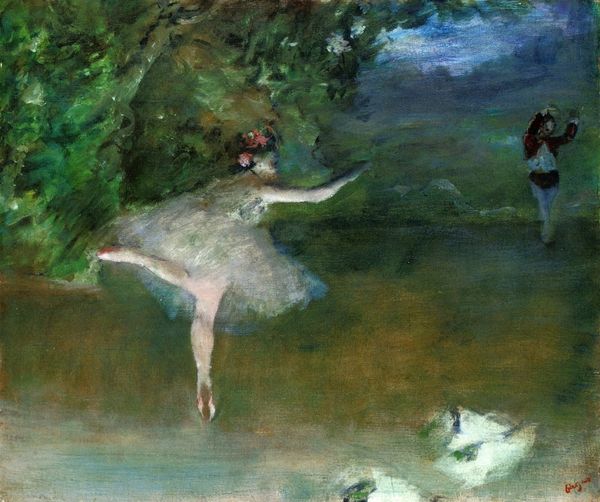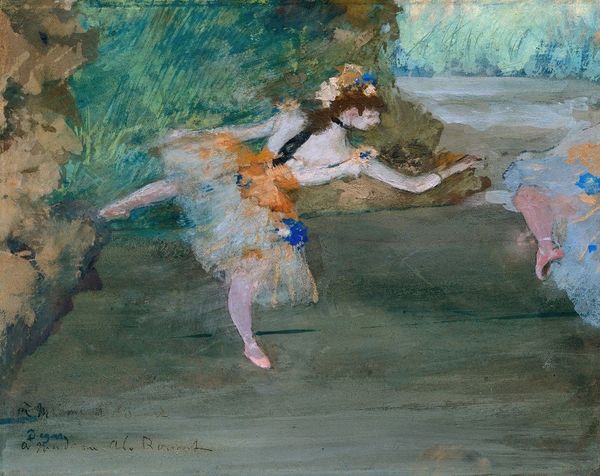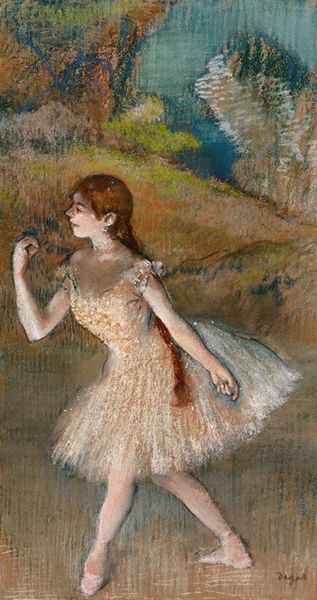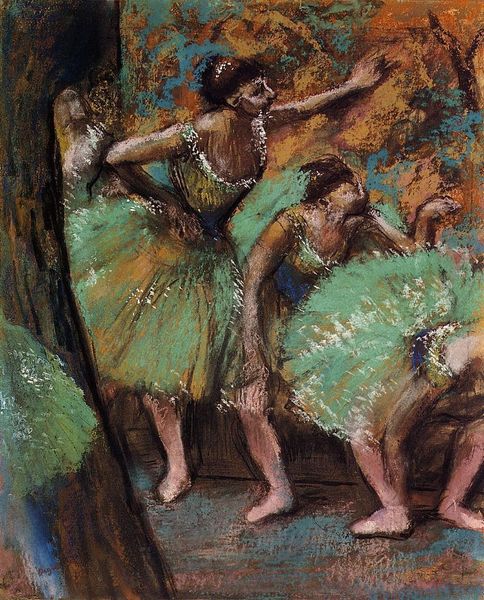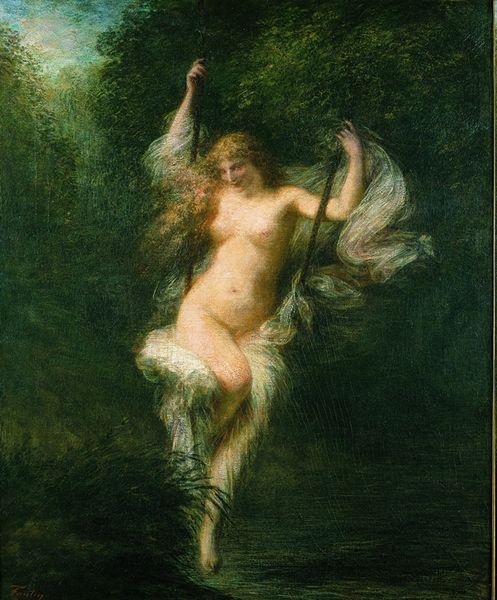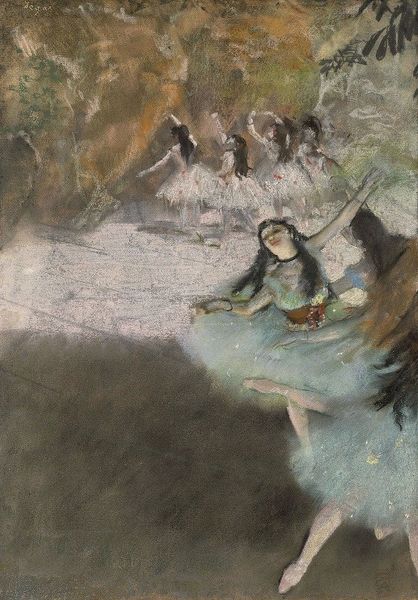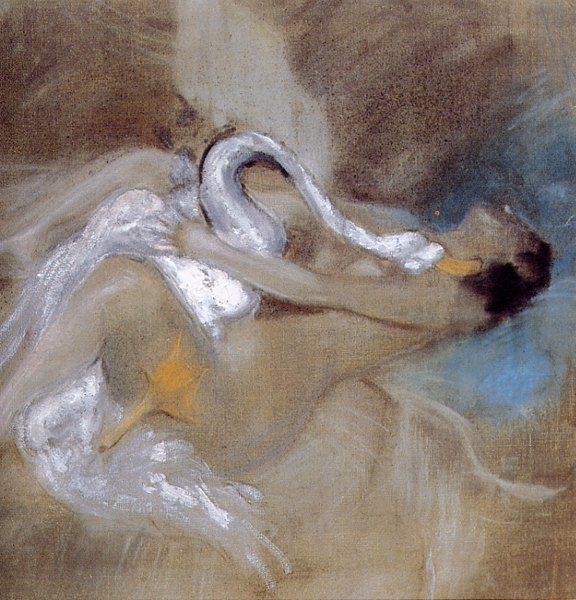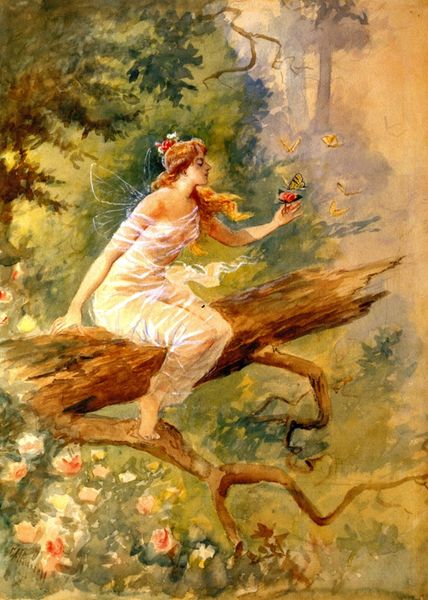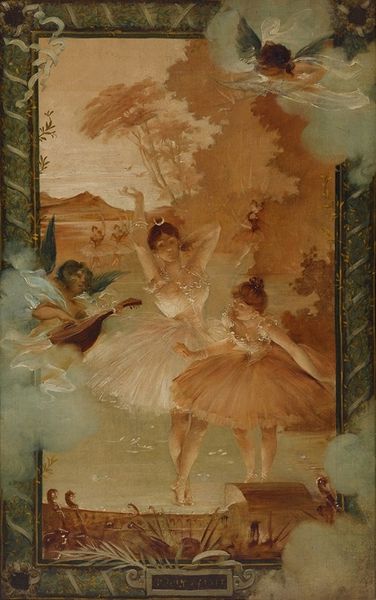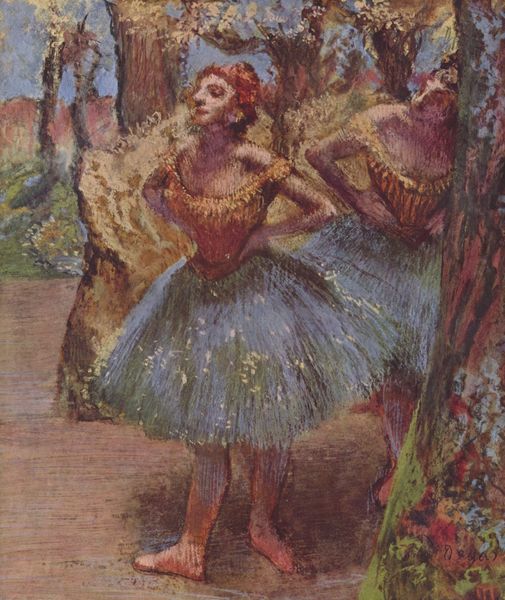
Copyright: Public Domain: Artvee
Curator: This is Edgar Degas' "Danseuse sur une pointe," created around 1877. The piece employs pastel and watercolor to capture a ballerina en pointe, suspended in a moment of delicate balance. Editor: My initial reaction is that it's dreamlike. The soft pastels give it a fleeting quality, like a memory of movement rather than a solid, grounded figure. Curator: The dreamlike quality speaks to the broader cultural fascination with ballet during the late 19th century, a period when ballet dancers, women in particular, occupied an important place as idealized images within the Western art world. Think of the ethereal ballerina representing notions of grace, beauty, but also, the constraints of performance and expectations placed on female bodies. Editor: The composition also contributes to this sense. Degas positions the ballerina off-center, with an expansive empty space in the foreground, which feels very modern for its time, and draws focus to her form, particularly the angularity of her extended limbs. Curator: Right, the specific pose that she's captured in, suspended en pointe, it’s such a visually and physically compelling moment. Ballet has origins as far back as the 15th century. But the Romantic ballet emerged in the late 18th- early 19th century, and ballet as a form comes to express this push and pull between idealized forms of freedom and grace, as well as the precision of structure, labor, training. And this contrast has carried over even to the present. Editor: I'm struck by the contrast between the dancer's delicate posture and the somewhat harsh lines used to define the backdrop. The soft focus on the ballerina contrasts with the bold, sketch-like rendering of the background space. It's a formal push-pull that amplifies the feeling of transience you mentioned. Curator: For me, what is so captivating about Degas is how, through his stylistic rendering, he captures the ballet dancer not as some frozen ideal, but always suspended in moments of movement and transition, negotiating all of the tensions of art-making and self-expression. Editor: I'm now contemplating how the artist manages to imbue this scene of classical elegance with such an immediacy, achieved through bold lines and a careful asymmetry.
Comments
No comments
Be the first to comment and join the conversation on the ultimate creative platform.
